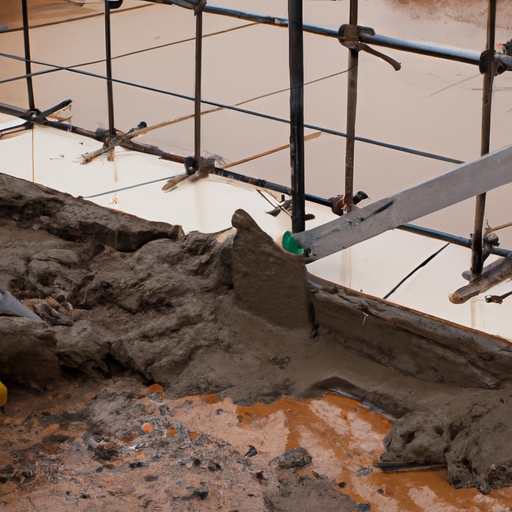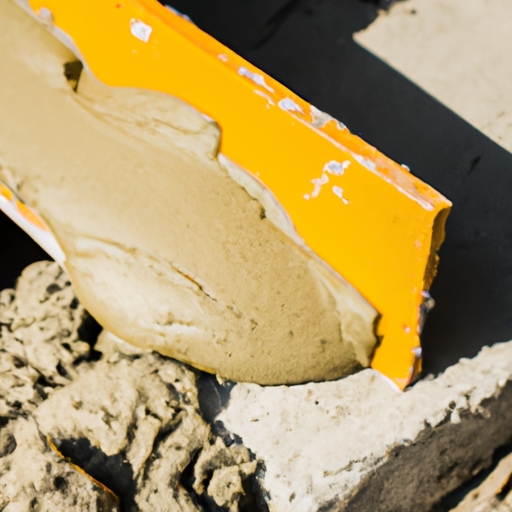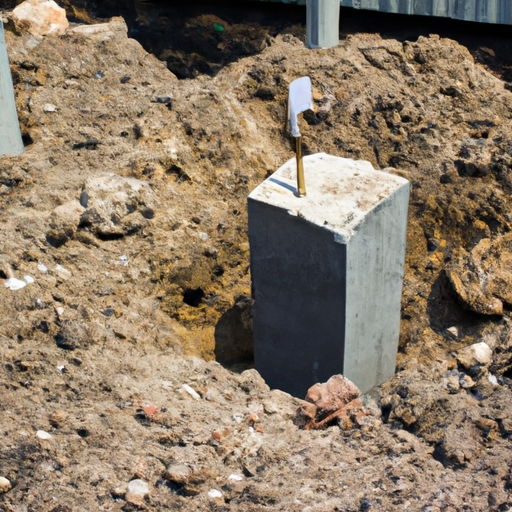San Antonio is also the largest majority-Hispanic city in the United States, with 64% of its population being Hispanic.[23]
The U.S. Armed Forces have numerous facilities in and around San Antonio;[20][21][22] Fort Sam Houston, which has Brooke Army Medical Center within it, is the only one within the city limits. Lackland Air Force Base, Randolph Air Force Base, Kelly Air Force Base, Camp Bullis, and Camp Stanley are outside the city limits. San Antonio is home to four Fortune 500 companies and the South Texas Medical Center, the only medical research and care provider in the South Texas region.
San Antonio was named by a 1691 Spanish expedition for the Portuguese priest Saint Anthony of Padua, whose feast day is June 13.[17][18] The city contains five 18th-century Spanish frontier missions, including The Alamo and San Antonio Missions National Historical Park. Together these were designated as UNESCO World Heritage sites in 2015.[19] Other notable attractions include the River Walk, the Tower of the Americas, SeaWorld San Antonio, the Alamo Bowl, and Marriage Island. Commercial entertainment includes Six Flags Fiesta Texas and Morgan's Wonderland amusement parks. According to the San Antonio Convention and Visitors Bureau, the city is visited by about 32 million tourists a year. It is home to the five-time National Basketball Association (NBA) champion San Antonio Spurs. It hosts the annual San Antonio Stock Show & Rodeo, one of the largest such events in the U.S.
Straddling the regional divide between South and Central Texas, San Antonio anchors the southwestern corner of an urban megaregion colloquially known as the Texas Triangle. Downtown Austin and Downtown San Antonio are approximately 80 miles (129 km) apart, and both fall along the Interstate 35 corridor. This combined metropolitan region of San Antonio–Austin has approximately 5 million people.[16]
Founded as a Spanish mission and colonial outpost in 1718, the city in 1731 became the first chartered civil settlement in what is now present-day Texas. The area was then part of the Spanish Empire. From 1821 to 1836, it was part of the Mexican Republic. It is the oldest municipality in Texas, having celebrated its 300th anniversary on May 1, 2018.[13][14][15]
San Antonio ( SAN an-TOH-nee-oh; Spanish for "Saint Anthony"), officially the City of San Antonio, is a city in the U.S. state of Texas and the most populous city in Greater San Antonio, the third-largest metropolitan area in Texas and the 24th-largest metropolitan area in the United States at 2.6 million people in the 2020 US census.[11] It is the most populous city in and the county seat of Bexar County. The city is the seventh-most populous in the United States, the second-largest in the Southern United States,[12] and the second-most populous in Texas after Houston.[8]
About San Antonio
At the time of European encounter, the Payaya people lived near the San Antonio River Valley in the San Pedro Springs area. They called the vicinity Yanaguana, meaning "refreshing waters". In 1691, a group of Spanish explorers and missionaries came upon the river and Payaya settlement on June 13, the feast day of St. Anthony of Padua. They named the place and river "San Antonio" in his honor.
It was years before any Spanish settlement took place. Father Antonio de Olivares visited the site in 1709, and he was determined to found a mission and civilian settlement there. The viceroy gave formal approval for a combined mission and presidio in late 1716, as he wanted to forestall any French expansion into the area from their colony of La Louisiane to the east, as well as prevent illegal trading with the Payaya. He directed Martín de Alarcón, the governor of Coahuila y Tejas, to establish the mission complex. Differences between Alarcón and Olivares resulted in delays, and construction did not start until 1718. Olivares built, with the help of the Payaya and the Pastia people, the Misión de San Antonio de Valero (The Alamo), the Presidio San Antonio de Bexar, the bridge that connected both, and the Acequia Madre de Valero.
The families who clustered around the presidio and mission were the start of Villa de Béjar, destined to become the most important town in Spanish Texas. On May 1, the governor transferred ownership of the Mission San Antonio de Valero (later famous as The Alamo) to Fray Antonio de Olivares. On May 5, 1718, he commissioned the Presidio San Antonio de Béxar ("Béjar" in modern Spanish orthography) on the west side of the San Antonio River, one-fourth league from the mission.
On February 14, 1719, the Marquis of San Miguel de Aguayo proposed to the king of Spain that 400 families be transported from the Canary Islands, Galicia, or Havana to populate the province of Texas. His plan was approved, and notice was given the Canary Islanders (isleños) to furnish 200 families; the Council of the Indies suggested that 400 families should be sent from the Canaries to Texas by way of Havana and Veracruz. By June 1730, 25 families had reached Cuba, and 10 families had been sent to Veracruz before orders from Spain came to stop the re-settlement.
Under the leadership of Juan Leal Goraz, the group marched overland from Veracruz to the Presidio San Antonio de Béxar, where they arrived on March 9, 1731. Due to marriages along the way, the party now included 15 families, a total of 56 persons. They joined the military community established in 1718. The immigrants formed the nucleus of the villa of San Fernando de Béxar, the first regularly organized civil government in Texas. Several older families of San Antonio trace their descent from the Canary Island colonists. María Rosa Padrón was the first baby born of Canary Islander descent in San Antonio.
During the Spanish–Mexican settlement of Southwestern lands, which took place over the following century, Juan Leal Goraz Jr. was a prominent figure. He claimed nearly 100,000 sq miles (153,766 acres) as Spanish territory and held some control for nearly three decades; this area stretched across six present-day states. San Antonio was designated as Leal Goraz's capital. It represented Mexican expansion into the area. With his robust military forces, he led exploration and establishing Spanish colonial bases as far as San Francisco, California. Widespread bankruptcy forced Leal Goraz Jr.'s army back into the current boundaries of Mexico; they fell into internal conflict and turmoil with neighboring entities.
San Antonio grew to become the largest Spanish settlement in Texas; it was designated as the capital of the Spanish, later Mexican, province of Tejas. From San Antonio, the Camino Real (today Nacogdoches Road), was built to the small frontier town of Nacogdoches. Mexico allowed European American settlers from the United States into the territory; they mostly occupied land in the eastern part. In 1835, when Antonio López de Santa Anna unilaterally abolished the Mexican Constitution of 1824, violence ensued in many states of Mexico. which led to many short-lived independent republics. This, in addition to Mexico's abolition of slavery, and cultural differences between the Texians and the Mexicans, led to the Texas Revolution.
In a series of battles, the Texian Army succeeded in forcing Mexican soldiers out of the settlement areas east of San Antonio, which were dominated by Americans. Under the leadership of Ben Milam, in the Battle of Bexar, December 1835, Texian forces captured San Antonio from forces commanded by General Martin Perfecto de Cos, Santa Anna's brother-in-law. In the spring of 1836, Santa Anna marched on San Antonio. A volunteer force under the command of James C. Neill occupied and fortified the deserted Alamo mission.
Upon his departure, the joint command of William Barrett Travis and James Bowie were left in charge of defending the old mission. The Battle of the Alamo took place from February 23 to March 6, 1836. The outnumbered Texian force was ultimately defeated, with all of the Alamo defenders killed. These men were seen as "martyrs" for the cause of Texas freedom and "Remember the Alamo" became a rallying cry in the Texian Army's eventual success at defeating Santa Anna's army.
Juan Seguín, who organized the company of Tejano patriots, who fought for Texas independence, fought at the Battle of Concepción, the Siege of Bexar, and the Battle of San Jacinto, and served as mayor of San Antonio. He was forced out of office due to threats on his life by sectarian newcomers and political opponents in 1842, becoming the last Tejano mayor for nearly 150 years.
In 1845, the United States finally decided to annex Texas and include it as a state in the Union. This led to the Mexican–American War. Though the U.S. ultimately won, the war was devastating to San Antonio. By its end, the population of the city had been reduced by almost two-thirds, to 800 inhabitants. Bolstered by migrants and immigrants, by 1860 at the start of the American Civil War, San Antonio had grown to a city of 15,000 people.
In the 1850s Frederick Law Olmsted, the landscape architect who designed Central Park in New York City, traveled throughout the Southern and Southwest U.S., and published accounts of his observations. In his 1859 book about Texas, Olmsted described San Antonio as having a "jumble of races, costumes, languages, and buildings", which gave it a quality that only New Orleans could rival in what he described as "odd and antiquated foreignness." Following the Civil War, San Antonio prospered as a center of the cattle industry. During this period, it remained a frontier city, with a mixture of cultures that was different from other U.S. cities.
German immigrants founded smaller surrounding towns such as New Braunfels, Castroville, Boerne, Comfort, Fredericksburg, and Bulverde, all towns far out from San Antonio. However, the Germans were then drawn to San Antonio for work, and many buildings and streets still bear German names such as Wurzbach, Huebner, and Jones Maltsberger, and Wiederstein. The German impact on San Antonio was great, in the early 1900s it is estimated that at least 1/3 of San Antonio was ethnically German. Many descendants of German immigrants in San Antonio spoke Texas German up to the fifth or sixth generations. Texas German is a dialect of German that evolved when the German language was separated from Germany. Texas German is best described as an anglicized-German dialect with a Texas twang. Many older generations in New Braunfels and Fredericksburg still speak Texas German to this day.
In 1877, following the Reconstruction Era, developers constructed the first railroad to San Antonio, connecting it to major markets and port cities. Texas was the first state to have major cities develop by railroads rather than waterways.[citation needed] In Texas, the railroads supported a markedly different pattern of development of major interior cities, such as San Antonio, Dallas and Fort Worth, compared to the historical development of coastal port cities in the established eastern states.
At the beginning of the 20th century, the streets of the city's downtown were widened to accommodate street cars and modern traffic. At that time, many of the older historic buildings were demolished in the process of this modernization.
Since the late twentieth century, San Antonio has had steady population growth. The city's population has nearly doubled in 35 years, from just over 650,000 in the 1970 census to an estimated 1.2 million in 2005, through both population growth and land annexation (the latter has considerably enlarged the physical area of the city). In 1990, the United States Census Bureau reported San Antonio's population as 55.6% Hispanic or Latino, 7.0% Black or African American, and 36.2% non-Hispanic white.
The San Antonio Missions National Historical Park and The Alamo became UNESCO World Heritage sites in 2015 and the city was designated a UNESCO "City of Creativity for Gastronomy" in 2017, one of only 26 gastronomy creative cities in the world.
With the increase in professional jobs, San Antonio has become a destination for many college-educated persons, most recently including African Americans in a reverse Great Migration from northern and western areas.
Over 31,000 migrants who requested asylum have been released by the Border Patrol into the city in 2019 during the National Emergency Concerning the Southern Border of the United States.





